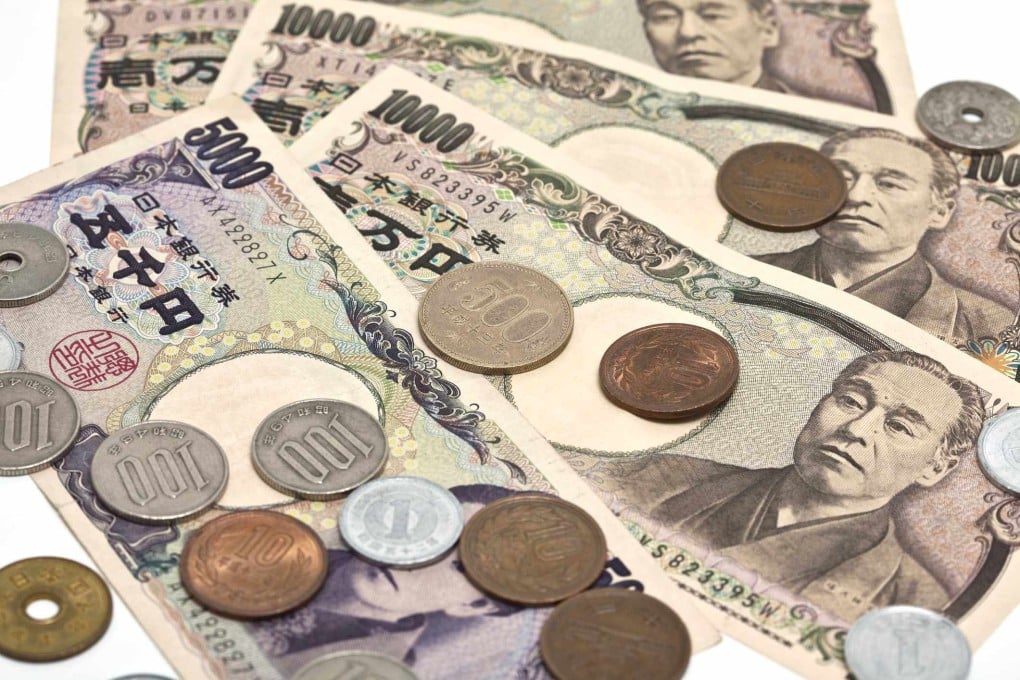Why a record low yen to US dollar exchange rate is a mixed blessing to Japan – no longer a safe haven, a weaker currency creates opportunities for tech exports and foreign investment
- The Japanese yen has fallen to its lowest level against the US dollar in 20 years, offering a boon for blue-chip exporters such as car manufacturers and tech firms
- Surging fuel costs are prompting a faster uptake for renewable energy, but also shifting thought on nuclear options

On April 19, the Japanese yen fell to 128.80 against the US dollar, its lowest level since 2002. The currency has lost 12 per cent against the dollar since January.
A weaker yen has long been lauded as a positive for Japan’s economy, enabling blue-chip exporters such as car manufacturers, but that narrative is increasingly in question. This time, the yen’s recent plunge provokes the impact of rising commodity prices, hitting some business and household finances much harder than ever before.
The significant difference this time is the effect of the country’s energy policy. With most of its nuclear power plants offline since the Fukushima disaster of 2011, Japan has imported about 90 per cent of its primary energy requirements from overseas, with nearly all fossil fuels shipped from long distances. The surge in global energy prices, already in effect before the Russian invasion of Ukraine, has hurt the economy and revealed the cracks in Japan’s energy strategy.
Now the weaker currency, coupled with surging crude and other commodity costs, has become even more damaging for smaller, domestic manufacturers.
Taking comparative rates of inflation into account, the yen has halved in value against the dollar since 1995, taking it back to levels not seen since the early 1970s. However, a 2022 dollar is not the same as a 1992 dollar in terms of buying power.
Consumer prices in the US have almost doubled in the 30-year period, whereas Japanese consumer prices have remained more steady.
In the short term, yen weakness leads to higher energy prices, but at the same time it incentivises change.
As fossil fuel prices rise, the more competitive the alternatives become. The two obvious contenders are nuclear power and renewable energy such as sunlight, wind, rain, tides, waves and geothermal heat.
Before the disaster of 2011, nuclear energy had accounted for almost 30 per cent of Japan’s total electricity production. There were plans to increase this to 40 per cent by 2017 and 50 per cent by 2030. In a 180-degree turn from its 2012 pledge to abandon nuclear power by 2030 after the Fukushima incident, two reactors restarted in August and October 2015, with a further eight having restarted since. Sixteen reactors are currently in the process of restart approval.
Another unintended benefit for the lower yen is that it will no longer have the designation as a safe haven currency, which sounds like a positive factor but has, in fact, led to undesired consequences.
In 2011, the yen-to-dollar exchange rate spiked to around 78 to the US dollar, even though the Japanese economy had just been crippled by the Fukushima earthquake. This added to the strain that exporters were facing with a disrupted logistics chain and decreased competitiveness in the global market.
Hongkongers are returning to the Japanese property market, taking advantage of a weakening yen.
“Inquiries for Japanese homes from Hongkongers have surged by up to 40 per cent this month,” said Anvy Cheung, chief executive of Sakura Global, a company that specialises in Japanese property. “In the past two years, most of them just stayed on the sidelines, adopting a wait-and-see approach [due to the pandemic].”
Most homebuyers are looking for property in Japan for investment or for a second home, with typical budgets ranging from HK$1.5 million (US$192,000) to HK$2 million, she added.
Prime Minister Fumio Kishida’s administration, meanwhile, continues to defend the Bank of Japan’s ultra-easy policy as a necessary support to a still-fragile economic recovery.